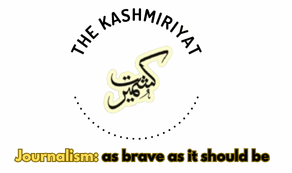
Sumbul Khan
Early in 1990, widespread arrests, curfews, and crackdowns were daily occurrences in the Kashmir valley.
The Gawkadal Bridge in Srinagar, Kashmir, was the inspiration for the massacre’s name. The survivors recount that a group of Kashmiri protesters were shot at by Indian paramilitary soldiers from the Central Reserve Police Force (CRPF). On January 19, 1990, the Indian government appointed Jagmohan Malhotra as the governor of Jammu Kashmir, and just two days later, a massive protest rally was taken out in Srinagar, the capital of Kashmir.
It started when the reports that some women in the Chotta Bazar neighborhood of downtown Srinagar had been assaulted during the nighttime in a crackdown on the preceding night of January 20 broke out on January 21, 1990. As soon as the word circulated, residents of the neighborhood emerged from their homes and began to demonstrate against it.
Thousands of people gathered on the streets and started marching toward Srinagar’s old city. The procession made its way via Magarmal Bagh, Padshahi Bagh, Kursoo-Rajbagh, Jawahar Nagar, and Mehjoor Nagar before arriving at Lal Chowk and starting its journey through Gaw Kadal to the old city.
The police officer DSP Alla Baksh stopped the procession at Ghanta Ghar, Lal Chowk, and ordered them to go towards Gaw-Kadal via Maisuma. When the procession got close to the bridge, governor Jagmohan had already sent security personnel to the area, who then started indiscriminate firing, killing dozens of people and injuring countless others. According to official statistics, there were more than 53 fatalities and more than 200 injuries.
When reflecting on what happened that day, witnesses said that the grisly tragedy at Gaw Kadal still keeps them up at night. It was blood everywhere, dead bodies scattered over the ground, the wounded were covered in blood, and the cries of the victims for aid still haunt those who survived the atrocity.
Shafiqa of Gaw Kadal recalled, “It seemed like Armageddon. The wounded were pleading for assistance, and those who attempted to aid them were also shot. The entire scenario was horrifying, and gunfire compelled the spectators to remain inside and observe the heinous crime helplessly, the wounded begged for their lives, but the army ignored them. They shot everyone, including those attempting to exit homes. No one was spared.”
Media reports quoted her saying, “I tried to go out of my house to look for my husband Shabir Ahmad Dar, who was participating in the protest march. Some of the injured leaped into the Jhelum to save their lives. The entire region was subject to a severe curfew for three days. I made a concerted effort to learn where my husband was. Three days later, I learned that he too was among those killed at Gaw Kadal.”
Police were looking into the situation in accordance with FIR (3/1990), later they registered the FIR at a Police Station Kral Khud Srinagar on 21-01-1990. The sections charged in the FIR were 148, 149, 307, 188 RPC, 153 RPC. The FIR claims that individuals breaking the curfew gathered at Gaw-Kadal from various locations. People were yelling anti-Indian government chants and calling for the withdrawal of military and paramilitary personnel from Kashmir.
The police announced on February 2019 that they have concluded their investigation into the 1990 Gaw Kadal killings case because they had been unable to identify the suspects. They also claimed that the incident’s documents were destroyed in the 2014 floods in their response to the State Human Rights Commission.
